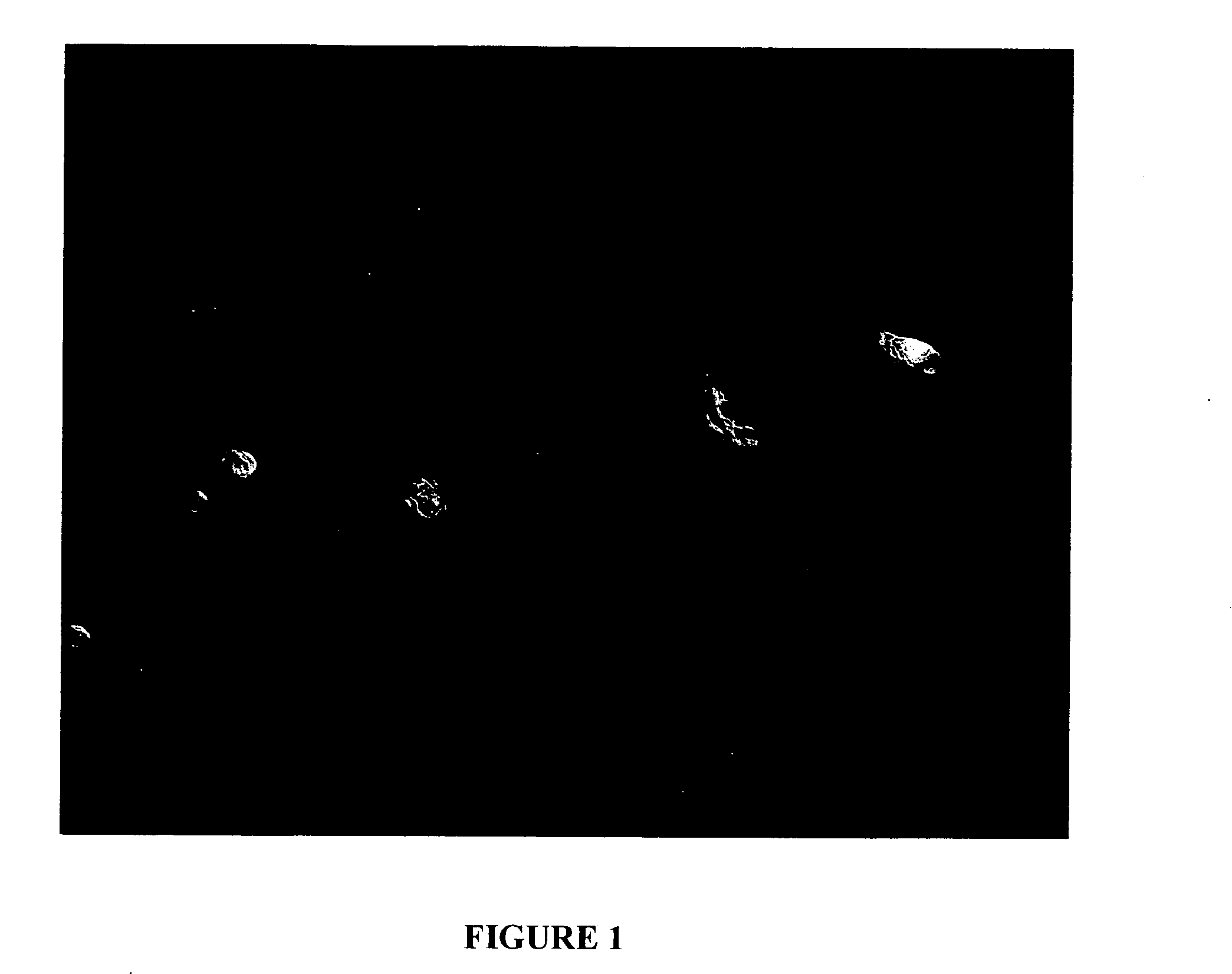Transdermal delivery of pharmaceutical agents
a technology of pharmaceutical agents and transdermal delivery, which is applied in the direction of antibacterial agents, antibody medical ingredients, peptide/protein ingredients, etc., can solve the problems of difficult oral administration, short biological half-lives, and difficult to deliver therapeutic quantities of water-soluble macromolecules such as peptides and proteins or other such pharmaceutical agents across the skin, so as to facilitate penetration and enhance the transdermal delivery of desired pharmaceutical agents. , the effect of easy application
- Summary
- Abstract
- Description
- Claims
- Application Information
AI Technical Summary
Benefits of technology
Problems solved by technology
Method used
Image
Examples
example 1
Preparation of a Pharmaceutical Composition with an Water-in-Oil Microemulsion
[0177] Microemulsions were formed by mixing an oil phase composed of a mixture of oil and surfactants / co-surfactants with one ninth volume of water. The oil mixture consisted of caprylic / capric triglyceride (Crodamol GTCC; Croda) and medium chain mono- and di-glyceride (Capmul MCM; Croda) at a 3:1 ratio; and a surfactant / co-surfactant mixture at a 3:2 ratio; the oil to surfactant / co-surfactant ratio varying from 50:50 to 80:20. The surfactant was either polysorbate 40 (Crillet 2; Croda), polysorbate 60 (Crillet 3; Croda), or polysorbate 80 (Crillet 4; Croda). The co-surfactant was either sorbitan palmitate (Crill 2; Croda), sorbitan stearate (Crill 3; Croda) or. sorbitan monooleate (Crill 4; Croda). The final concentration of each pharmaceutical agent within the microemulsion was between 0.1 μg / ml to 100 mg / ml, each being dissolved in either the oil phase or water phase (as appropriate) prior to final mix...
example 2
Preparation of a Pharmaceutical Composition with an Water-in-Oil Microemulsion
[0178] Microemulsions were formed by mixing 3.5 ml of hexane (Sigma Chemical) with 1.5 g of surfactant and cosurfactant (Crillet 4 (Croda Surfactants) and Crill 4 (Croda Surfactants) at the ratio of 1:1) and adding 260 μl of protein solution at 10 mg / ml.
example 3
Preparation of a Pharmaceutical Composition with an Water-in-Oil Microemulsion
[0179] A stable microemulion was formed by mixing 16 g of oil (Crodamol GTCC (Croda Surfactants) and Capmul (Croda Surfactants), at 3:1 ratio) with 4 g of surfactant and cosurfactant (Brij 72 (Sigma Chemical) and Brij 97 (Sigma Chemical), at the ratio of 3:1) and stirring until clear. Water phase containing one or more water-soluble pharmaceutical agents was then added (0.5 ml; final concentration of pharmaceutical agent varied from 2 to 10 mg / ml). Microemulsion formation occurred following gentle shaking of the oil and water phases.
PUM
| Property | Measurement | Unit |
|---|---|---|
| droplet diameter | aaaaa | aaaaa |
| solubility | aaaaa | aaaaa |
| concentration | aaaaa | aaaaa |
Abstract
Description
Claims
Application Information
 Login to View More
Login to View More - R&D
- Intellectual Property
- Life Sciences
- Materials
- Tech Scout
- Unparalleled Data Quality
- Higher Quality Content
- 60% Fewer Hallucinations
Browse by: Latest US Patents, China's latest patents, Technical Efficacy Thesaurus, Application Domain, Technology Topic, Popular Technical Reports.
© 2025 PatSnap. All rights reserved.Legal|Privacy policy|Modern Slavery Act Transparency Statement|Sitemap|About US| Contact US: help@patsnap.com



